What comes to mind when you think of renewable energy? Are solar panels soaking up the sunshine? Are wind turbines spinning gracefully against a bright sky? Perhaps you envision a rushing river, its power harnessed to generate clean electricity. That is the captivating world of hydro electronic power.
Hydroelectronic power, often called “hydropower,” is a major part of the global energy system. It is a well-established technology. Many dams and power plants have been operating for years. However, like any energy source, it’s not without its complexities and environmental impacts.
In this article, we will examine the fascinating world of hydroelectric power. We will explore surprising ways it impacts our planet. We will review both its eco-friendly advantages and its potential drawbacks. By the end, you will have a well-rounded understanding of this vital energy source. You will be able to form your own informed opinions about its role in a sustainable future. Get ready to be surprised, because hydroelectric power might not be as simple as you think.
Introduction to Hydro Electronic Power:
This section will introduce you to the world of hydroelectric power. Hydro electric power is a renewable energy source that has helped shape civilizations. This energy source continues to have a strong impact on our planet today. We will explore hydroelectronic power further.
What is Hydroelectric Power and What is its History?
Hydro electronic power is a form of energy that uses the power of moving water to make electricity. Water often starts its journey from high places, such as mountains or dams. As it flows downward, it gains speed. This energy is captured by turbines, which are like wheels that spin. The turbines are connected to generators, which change the mechanical energy into electrical energy.
The history of hydroelectric power dates back centuries. Ancient civilizations, like the Greeks, utilized water wheels for tasks like grinding grain. The Greeks used water wheels to power mills and other machines, showing their understanding of the power of water. However, the first hydroelectric power plant was built in 1882 on the Fox River in Appleton, Wisconsin, USA. This marked a turning point. It showed the potential of harnessing water on a larger scale for electricity generation.

How Does Hydro electronic Power Work?
The principle behind hydro electronic power is straightforward. It centers around converting the kinetic energy of moving water into electricity. This process generally involves a dam, a reservoir, and a powerhouse containing turbines.
Water flows from the reservoir through the dam. It is channeled through a narrow passage called a penstock. This focused flow of water gains immense force. It spins turbines connected to generators within the powerhouse. The spinning motion of these generators produces electricity. This electricity is then distributed through power lines.
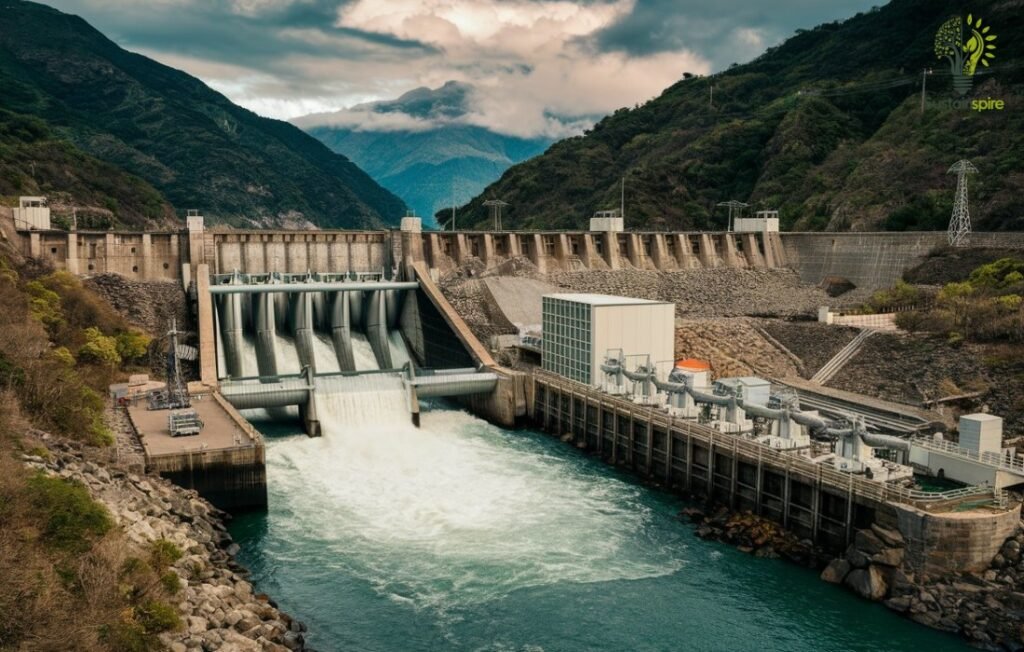
Different Types of Hydroelectric Plants:
There are three main types of hydro electronic power plants:
1. Impoundment Facilities:
Impoundment facilities are the most common type. These plants use a dam to create a large reservoir. Water is released from the reservoir through turbines, generating electricity. The Hoover Dam on the Colorado River in the United States is a famous example of an impoundment facility.
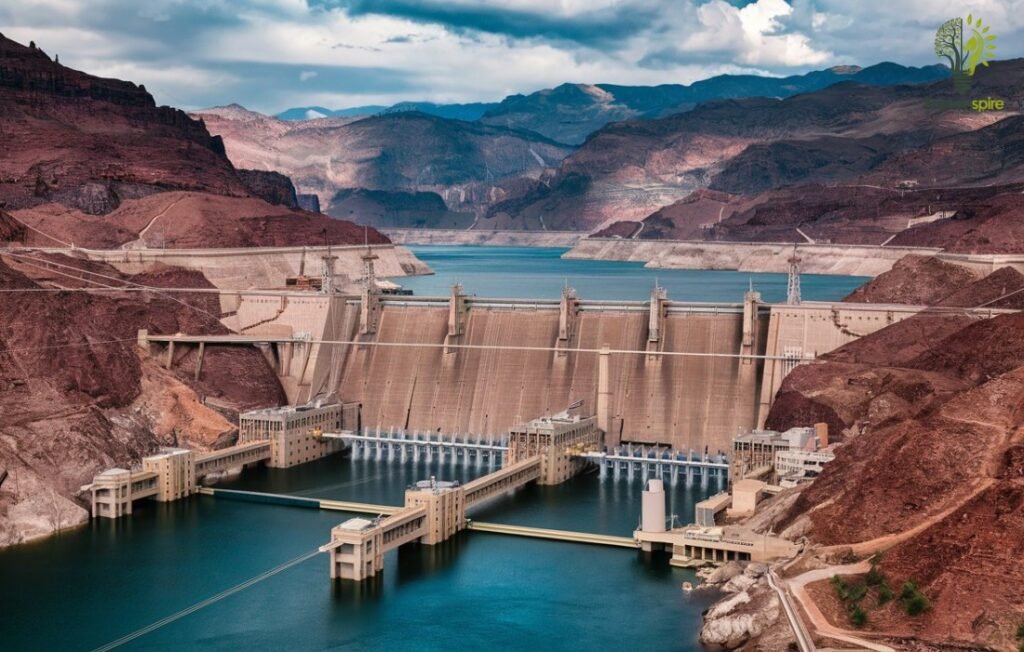
2. Diversion Facilities for Hydro Electronic Power:
Diversion facilities, also known as run-of-river plants, channel a portion of a river through a canal or penstock. The flowing water drives turbines to produce electricity. This type of plant has a smaller environmental footprint compared to impoundment facilities.
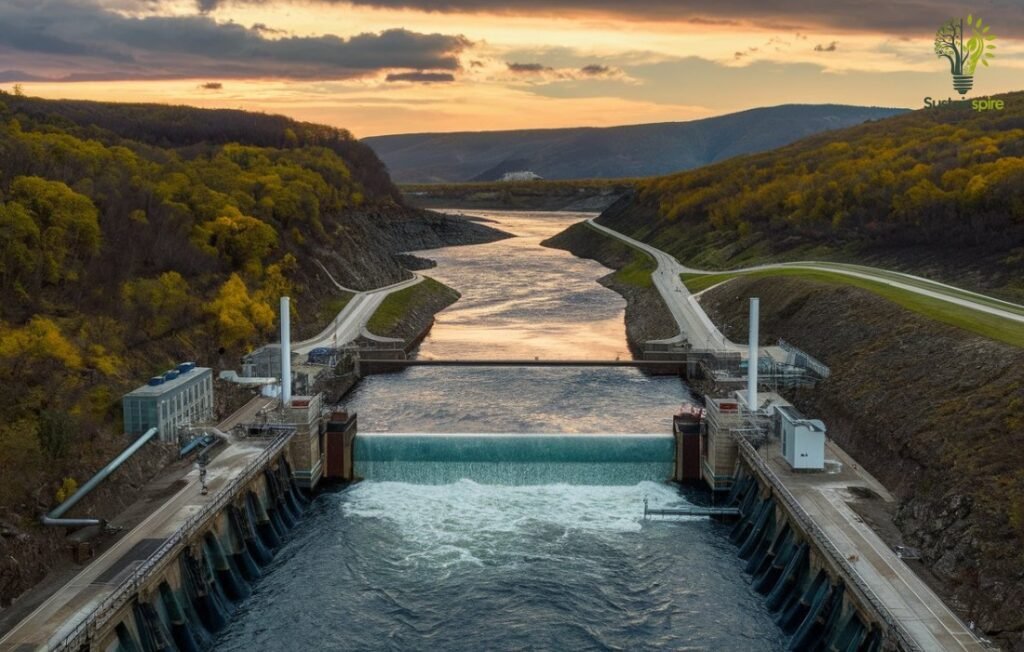
3. Pumped-Storage Facilities:
Pumped-storage facilities are unique in that they act like giant batteries. They have two reservoirs at different elevations. During periods of high energy demand, water flows from the upper reservoir to the lower, generating electricity. During periods of low demand, excess electricity is used to pump water back to the upper reservoir.
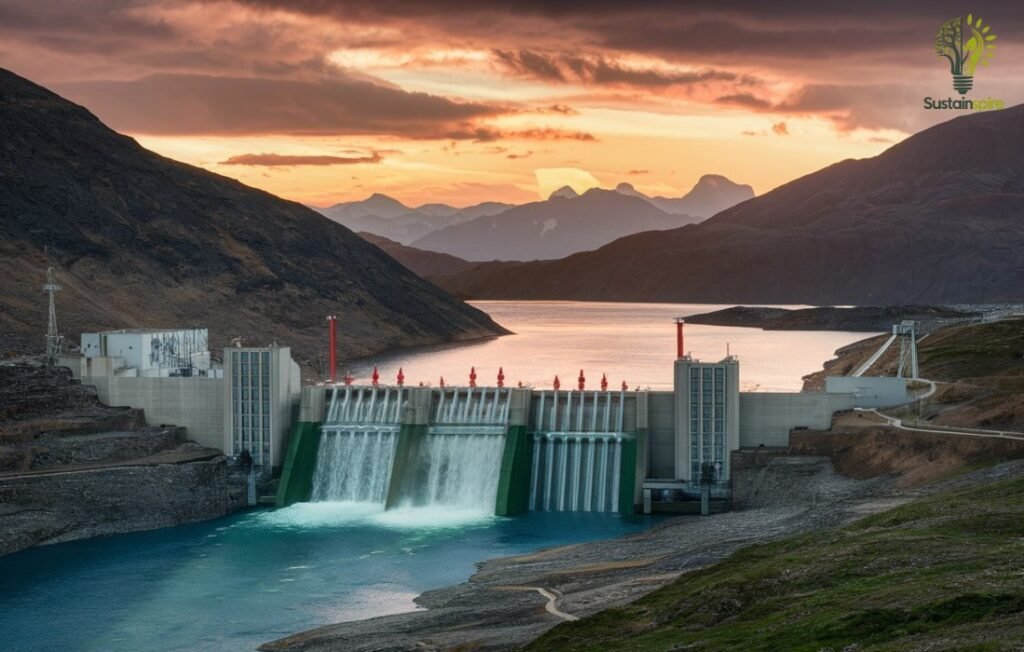
How Common is Hydroelectric Power Worldwide?
Hydroelectric power is a major player in the renewable energy sector. It accounts for a significant portion of global electricity generation. We reviewed a report of World Bank Group. In 2021, hydropower contributed to roughly 16% of the world’s total electricity supply. This highlights its substantial role in meeting energy demands.
China is the world’s largest producer of hydro electronic power. China has an impressive installed capacity that is over 390 gigawatts (GW). The Three Gorges Dam is located on the Yangtze River in China. It is the world’s largest hydroelectric power plant. The Three Gorges Dam has a staggering installed capacity of 22.5 GW. This dam alone generates enough electricity to power millions of homes and industries.
Other countries are also significantly invested in hydroelectric power. These include Brazil, Canada, the United States, and Russia. The Itaipu Dam is situated on the Paraná River bordering Brazil and Paraguay. It holds the title for the second-largest hydroelectric power plant globally. It has an installed capacity of 14 GW. These projects show the potential of using water resources for clean energy production.

Impacts of Hydro electronic Power on Our Planet:
This section explores how hydroelectric power generation affects our environment. We will look at both the positive and negative impacts of this renewable energy source. We will learn how hydro electronic power helps fight climate change and how it impacts local ecosystems. Understanding these impacts is crucial for making informed decisions about our energy future.
1. Hydropower for Climate Action:
Harnessing the power of water is a powerful tool in the fight against climate change. Hydropower stands out as a renewable and clean energy solution. It directly contributes to global efforts in reducing greenhouse gas emissions. But how exactly does it achieve this?
Unlike fossil fuel-powered plants, hydro electronic dams produce electricity without burning coal or gas. This eliminates the release of harmful greenhouse gases like carbon dioxide (CO2). CO2 is the most significant contributor to climate change. By replacing fossil fuels, hydropower helps mitigate the increasing concentrations of CO2 in the atmosphere. This is a key step towards a healthier planet.
In 2019 the National Renewable Energy Laboratory (NREL) did a study. They found that hydropower plants in the United States prevented the emission of over 200 million tons of CO2 in 2018 alone. That’s equivalent to removing nearly 43 million cars from the road for an entire year.
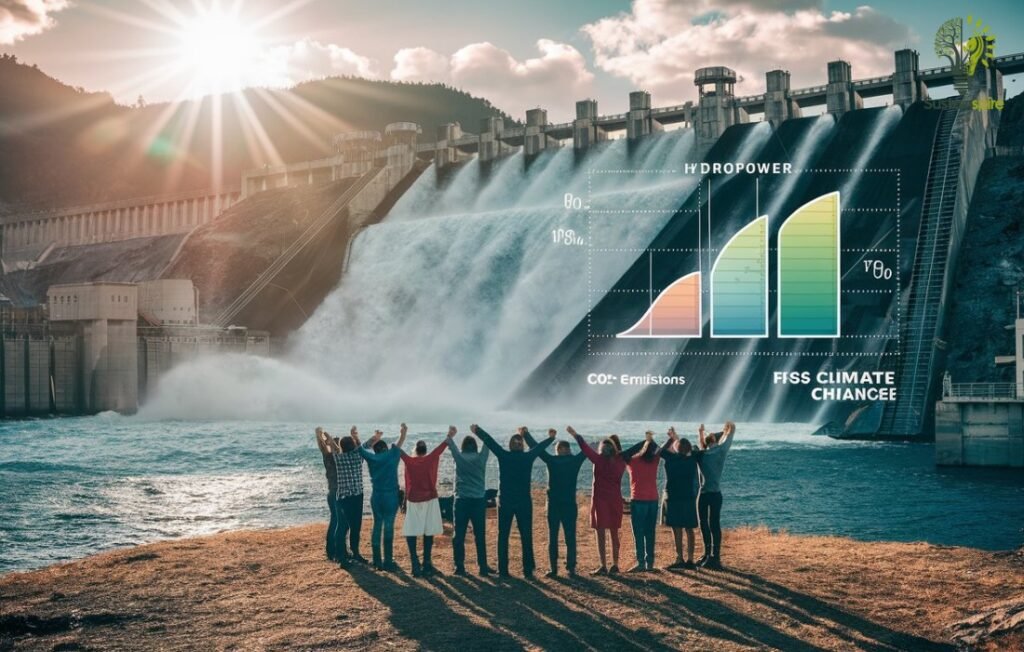
2. Environmental Benefits of Hydropower:
Hydropower offers many benefits for air and water quality. It goes beyond just helping with climate change. One of the most important benefits is that it helps reduce air pollution. When we use hydropower instead of fossil fuels to make electricity, it stops the release of harmful pollutants. These pollutants, like sulfur dioxide (SO2) and nitrogen oxides (NOx), are bad for people and the environment. They can cause respiratory problems, acid rain, and smog.
Hydro electronic power reservoirs can help improve water quality in some places. For example, the Hoover Dam was built in the 1930s. This dam provided electricity and helped control the flow of the Colorado River. It reduced flooding and improved water access for communities downstream.
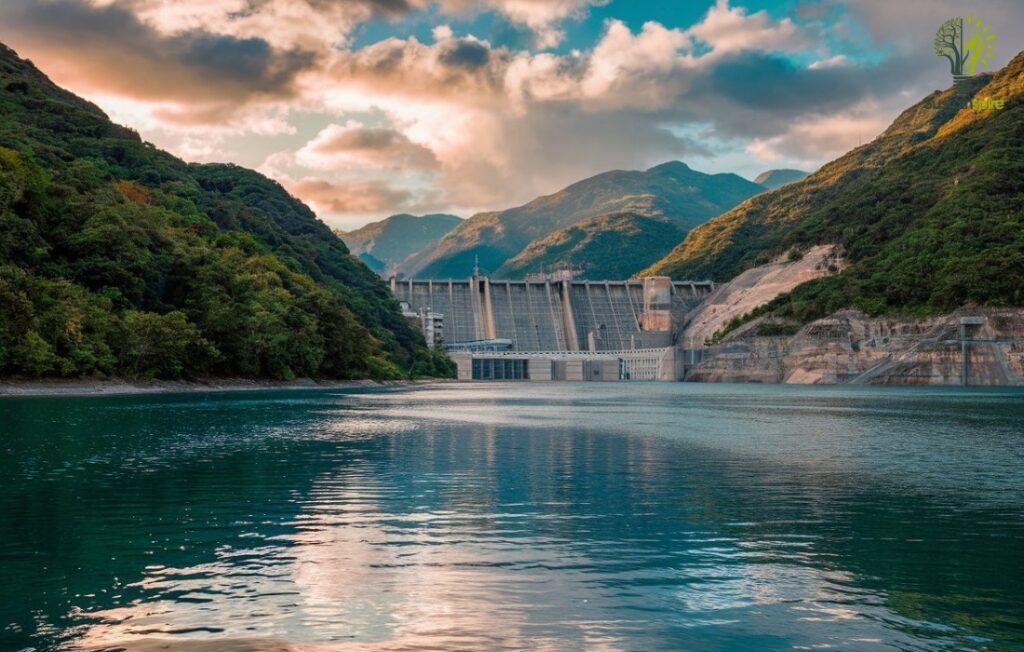
The Impacts of Hydroelectric Dams on Ecosystems:
Hydroelectric power is often considered a clean energy source. However, it has significant and lasting impacts on our planet. We have already discussed the basics of hydro electronic power. Now, we will look more closely at the positive and negative impacts of these dams on our ecosystems.
1. Sustainable Hydropower:
Sustainable hydropower aims to generate electricity. At the same time, it minimizes harm to the environment and local communities. This delicate balance requires careful planning. The project’s long-term effects must also be considered.
The Tekapo A Power Station in New Zealand was built in 1951. It is a good example of a project that successfully integrated with the environment. The project included fish ladders and a minimum flow regime. These features protected the natural ecosystem. This approach allowed the power station to generate hydro electronic power for decades. It also maintained the health of the river and its inhabitants.
Sustainable hydropower aims to meet the challenge of generating power while protecting the environment. This is done by prioritizing environmentally responsible practices. For example, “run-of-river” hydropower plants are designed to generate electricity from the natural flow of water. They minimize disruptions to river ecosystems. These plants typically have smaller dams or no dams at all, which reduces their overall footprint.
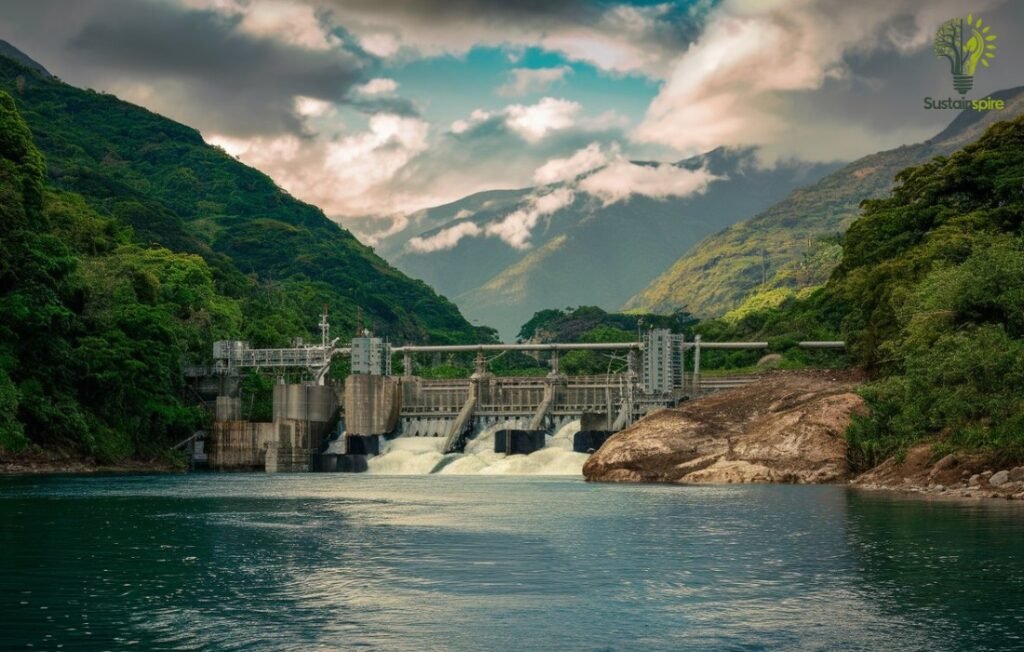
2. Dam Impacts on Rivers and Wildlife:
Dams are important for hydropower, but they change how rivers flow naturally. This change in water flow affects riparian habitats, which are the lands next to rivers. Riparian habitats are vital for many species. Land animals, such as bears, wolves, and deer, depend on these areas for food, water, and places to travel. Building dams can break up habitats and separate animal groups. This can make it hard for animals to survive over the long term.
The construction of a dam in the Amazon rainforest flooded large areas. This forced jaguars to compete for smaller territories and resources. In the Yellowstone River system, dams have impacted grizzly bear populations. The altered water flow has reduced the amount of berries and fish available for the bears. This shows how important it is to think about the needs of land animals when planning and running hydro electronic projects.

3. Fish Migration Challenges:
Dams are a huge problem for fish migration. They disrupt the natural life cycles of fish and harm fish populations. Many fish, like salmon, need free-flowing rivers to reach their spawning grounds.
Fortunately, solutions like fish ladders and fish bypass systems have been developed. These solutions help fish to move around man-made barriers. These structures create new paths for fish to travel upstream. They also help in generating power with the help of hydro electronic power tools. They mimic the natural features of a river. While these solutions are not always perfect, they show that we are trying to fix the problems that dams cause for aquatic life.
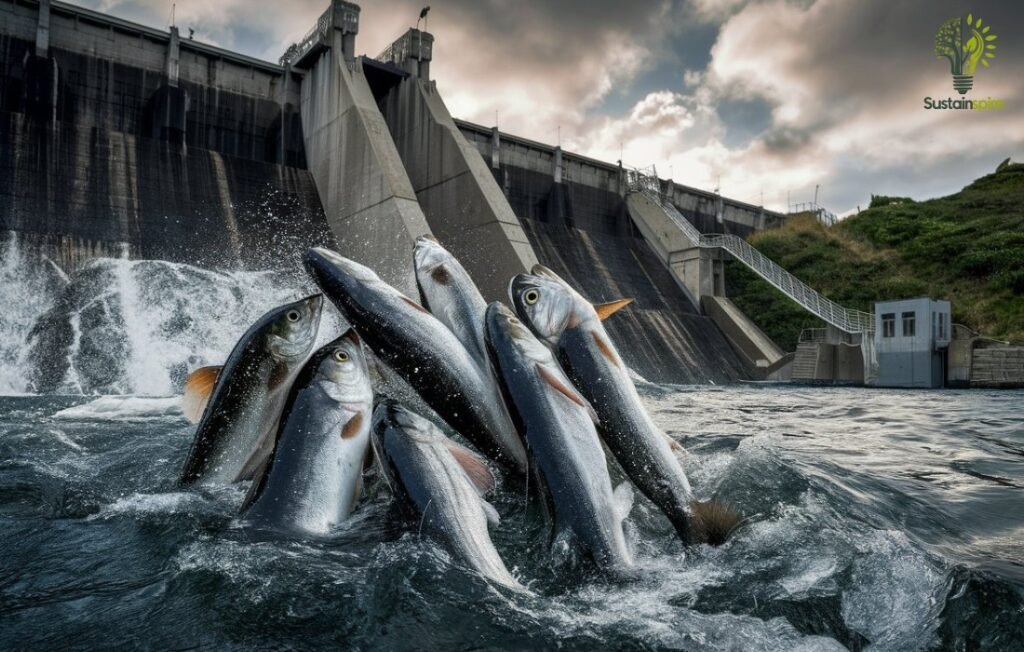
The Socioeconomic Impacts of Hydroelectric Power Projects:
Hydro electronic power projects have big effects on communities and economies, besides their environmental impacts. This section will look at how hydroelectric power can affect people and economies in different ways. We will see how it can help economies grow. We will also see how it can lead to people needing to move from their homes. Let’s learn about the effects of hydroelectric power.
1. Powering Communities:
Hydroelectric power plants often serve as economic engines. They attract industries and help the economy grow in nearby areas. A study by the University of Oxford found that regions with new hydroelectric dams experienced an average GDP growth rate 2% higher than regions without. These projects create jobs in construction and operation. They also create jobs in other industries like tourism and transportation.
The construction of the Grand Coulee Dam in Washington State during the Great Depression provided thousands of jobs. It also boosted the local economy. Today, the dam continues to support jobs and attract tourists. This shows the long-lasting economic benefits of hydro electronic power.
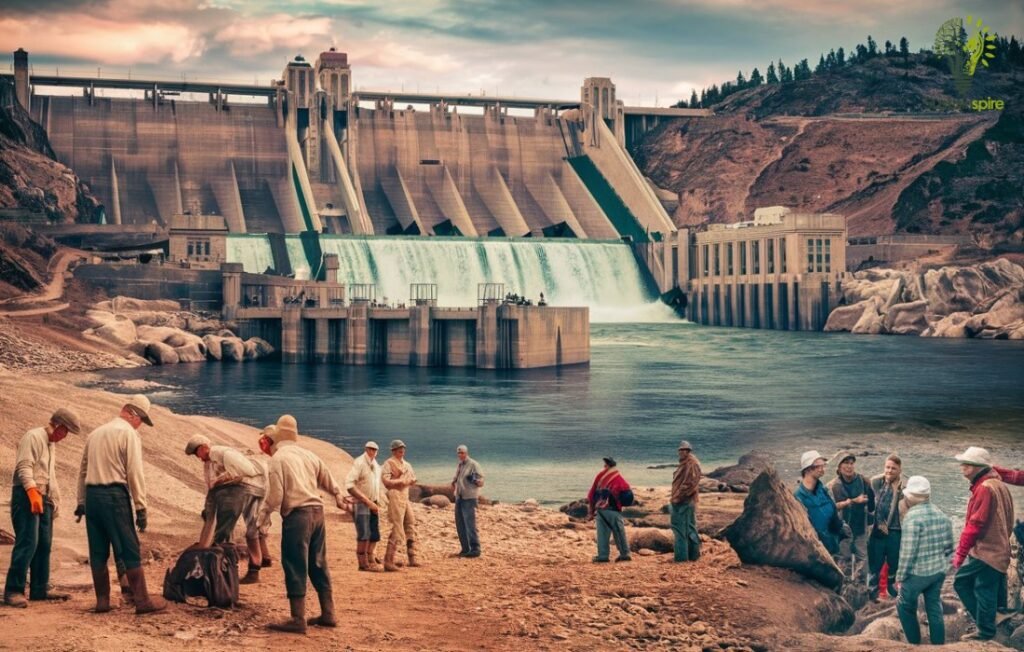
2. Job Creation and Local Benefits:
The economic impact of hydropower is significant. It goes beyond the dam itself. Construction requires a diverse workforce. This includes engineers, architects, skilled laborers, and support staff. Once operational, the plant needs technicians, managers, and administrative personnel. These jobs often pay higher-than-average wages. This puts money back into the local economy.
Hydro electronic projects often lead to improved infrastructure in the surrounding areas. New roads, transmission lines, and communication networks are built to support the project. These improvements benefit local communities. For instance, the construction of the Atatürk Dam in Turkey in 1992 led to the development of new roads and irrigation systems. These developments boosted agricultural productivity in the region.
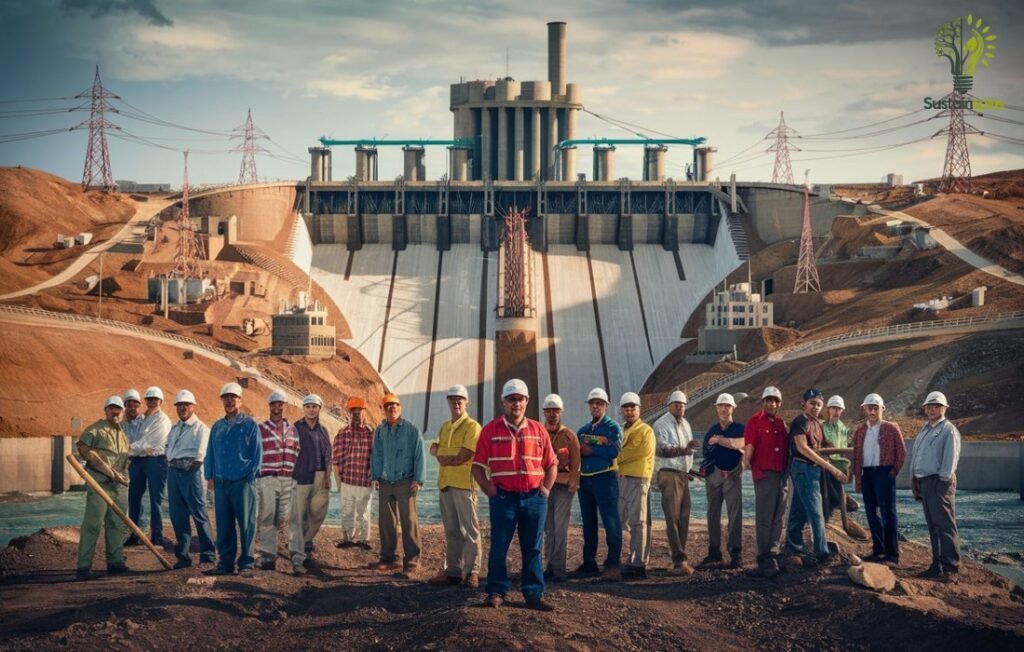
3. Displacement and Social Impacts:
Hydro electronic projects offer many benefits. However, they can also create challenges. Building large dams often requires flooding land. This can dislocate communities and impact cultural sites. The World Commission on Dams estimates that between 40 and 80 million people have been displaced worldwide due to dam construction.
Recognizing the sensitive nature of displacement, responsible developers now prioritize minimizing social impacts. They do this by making sure relocated communities are fairly compensated. Responsible developers also invest in new housing and infrastructure. Additionally, they work to preserve cultural heritage. The success of these efforts depends on meaningful consultation and collaboration with affected communities.

The Future of Hydroelectric Power:
Hydroelectric power is an old idea. It continues to evolve in exciting ways. We will explore the future of hydro electronic power. This section focuses on technological advances. We will also see its role in a greener tomorrow.
1. Technological Advancements:
Hydro electronic power generation is already quite efficient. Researchers are constantly looking for ways to improve. One area of focus is on developing more efficient turbines. These new turbines can generate more electricity from the same amount of water. This makes hydroelectric power more cost-effective and reduces the environmental impact. For example, GE Renewable Energy developed a new type of turbine called the “Francis 99”. This turbine is more than 90% efficient, a significant improvement over older designs.
Another area of focus is on developing fish-friendly turbines. These turbines are designed to minimize harm to fish passing through them. This addresses a long-standing concern about the impact of hydroelectric dams on aquatic life. A good example is the work being done by the Pacific Northwest National Laboratory. They are developing new turbine designs and testing them at a specialized facility.
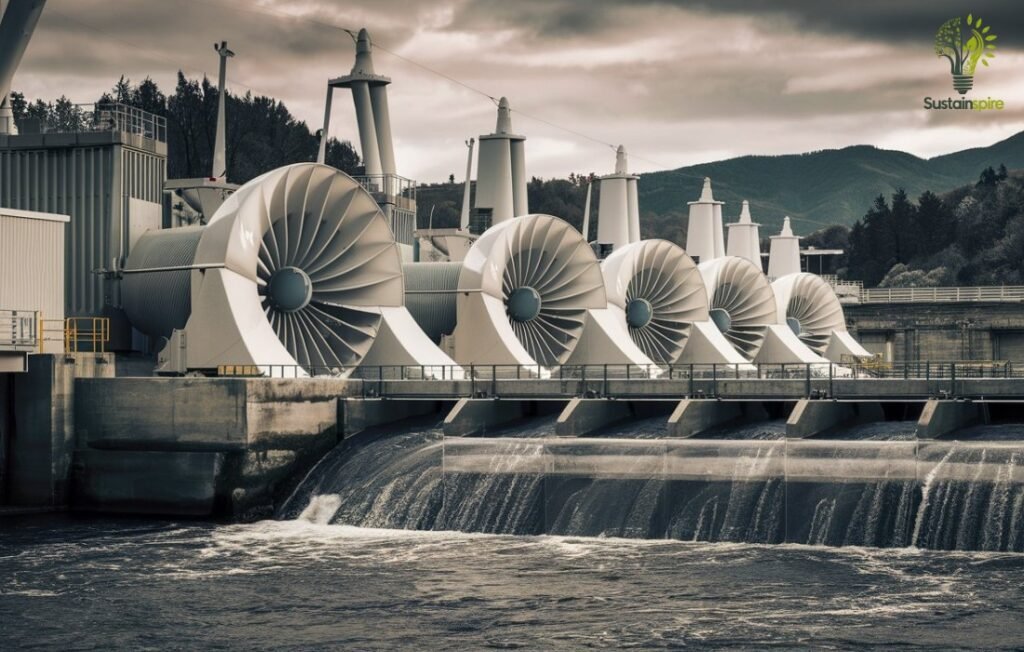
2. Sustainable Hydropower Practices:
In the previous section, we discussed how important it is to find sustainable practices for using hydro electronic power. We need to balance our need for energy with protecting the environment.
Sustainable hydropower is not just about protecting the environment. It’s also about using new technology and improving current methods. Think of it as giving hydroelectric power a modern upgrade. Imagine harnessing the power of a rushing river without building a huge dam. That is what “run-of-river” hydropower is all about. This method has a lower impact on the environment.
One exciting project using this technology is happening in Canada, on the Magpie River. Researchers from the University of Quebec are working on a project. This project will generate electricity with minimal disruption to the river’s natural flow. By focusing on innovation and responsible development, we can ensure that hydroelectric power remains a vital source of clean energy. This clean energy will be available for generations to come.

3. Hydro Electronic Power’s Role in a Clean Energy Future:
The world is transitioning away from fossil fuels. Finding sustainable and reliable energy sources becomes paramount. Hydro electronic power plays a vital role in this transition. It offers a clean and renewable alternative. The International Energy Agency (IEA) projects that global energy demand will increase by 47% by 2050. Currently, fossil fuels account for a staggering 80% of the world’s energy production. This highlights the urgent need for cleaner alternatives.
Hydropower already accounts for a significant portion of the world’s renewable energy generation. In 2021 alone, hydropower contributed over 16% of the world’s total electricity generation. With the right investments and policies, hydropower can play an even more significant role in meeting future energy demands. This will help reduce the worst effects of climate change.
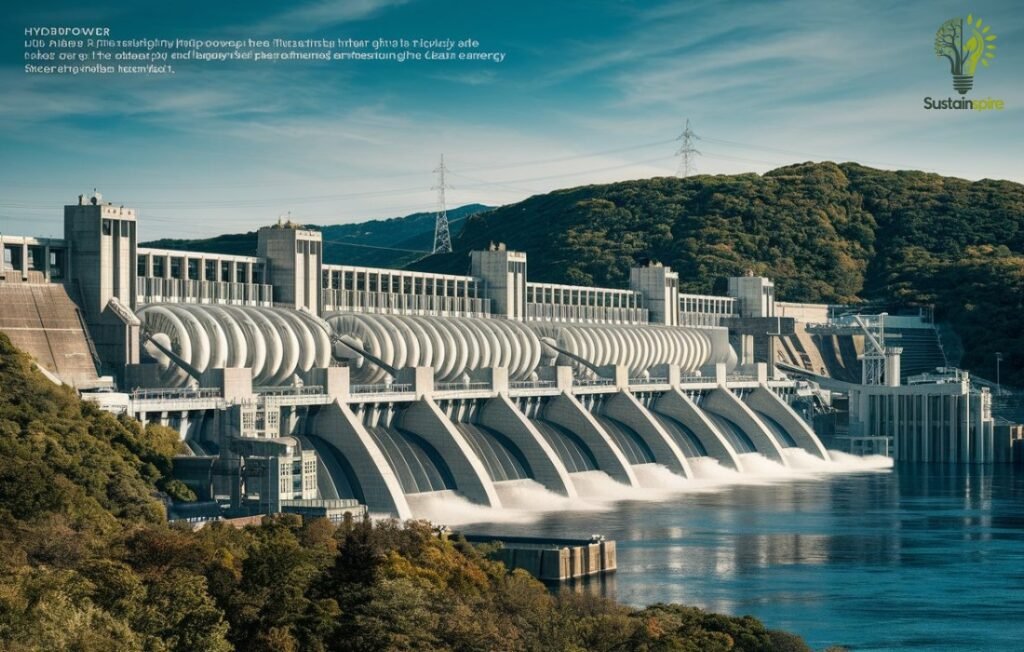
Conclusion:
In this article, we explored the world of hydroelectricity, its history, and its impact on our planet. We learned about the different types of hydro electricity plants and how they work. We also discussed the positive and negative impacts of this energy source.
Hydro electronic power is a renewable energy source that offers several benefits. It helps fight climate change by reducing greenhouse gas emissions. It also improves air and water quality. However, we must acknowledge that hydroelectric dams can significantly impact ecosystems and communities.
Finding a sustainable path for hydropower development is crucial. This means carefully planning projects to minimize environmental damage. Hydropower projects also need to address the concerns of affected communities. As we look to the future, hydro electric power has the potential to play a major role in a clean energy future. With innovative technology and responsible practices, we can harness the power of water while protecting our planet.
What are your thoughts on the future of hydroelectronic power? Share your opinions in the comments below!






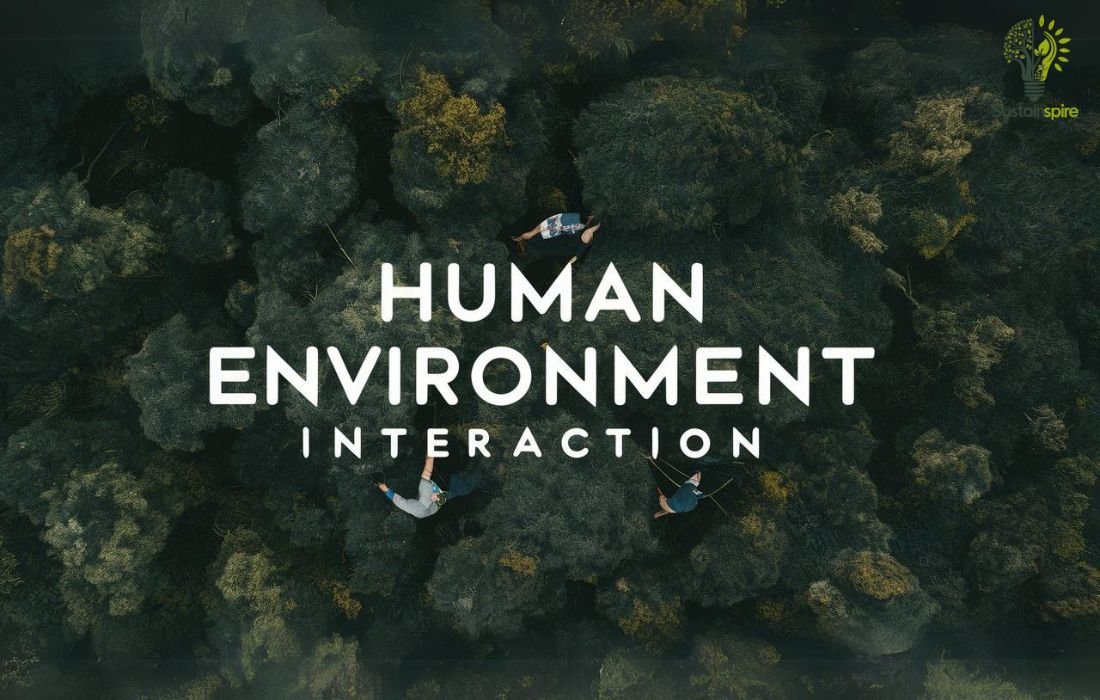
One thought on “Key Ways Hydro electronic Power Impacts Our Planet”